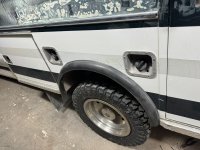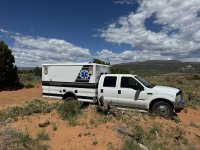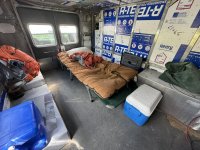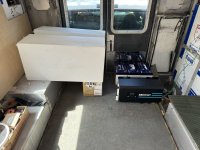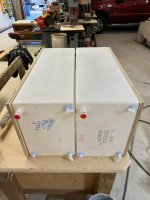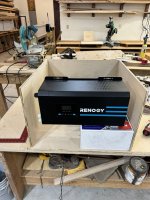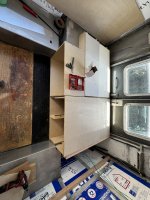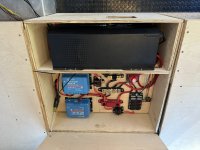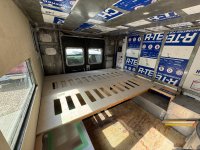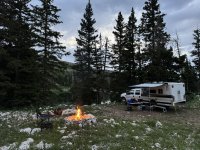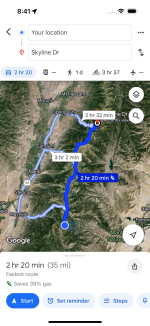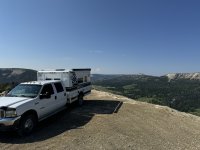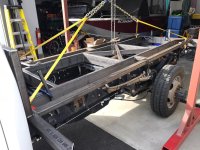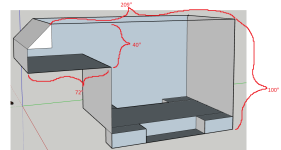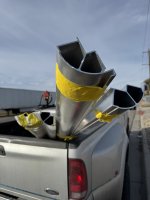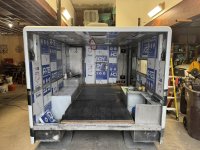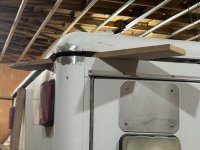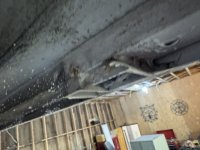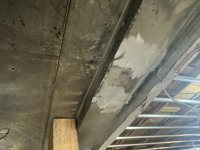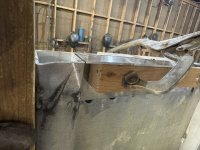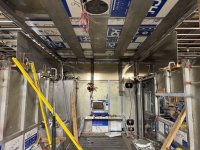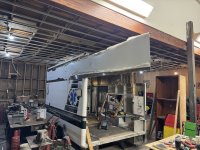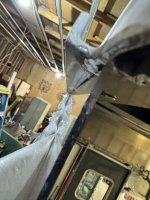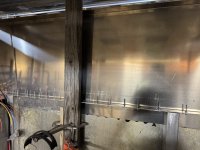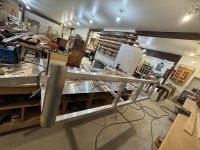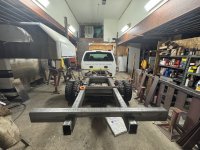I really enjoy the planning, building, and fabrication process. I also really like the outdoors. I saw this as a good way to incorporate those two things into one project. My background in off road travel was previously limited to truck camping, which was great for me, but wouldn't get the wife out into the wilderness with me. My background in fabrication is completely as a hobbyist, but I've built some race cars, many shop projects: my garagejournal if anyone cares to look(https://www.garagejournal.com/forum/threads/the-jungle.404733/), and having my Dad, and youtube, as a resource. I knew what I wanted for the truck platform and it was a crew cab 1999-2003 ford with the 7.3 diesel. My Dad owns many of them and its a familiar truck. I wanted the strongest chassis I could start with, and figured making it weaker would be easier than stronger, so I started looking for a F550. As for what to put on it, I've always liked function over form vehicles like service trucks, ambulances, fire trucks... I knew that ambulances were basically just aluminum boxes, and that sounded really easy to work with, so I found a cheap one and kept looking for the truck.
This was January 2024.
$2000 later and we have an aluminum box.
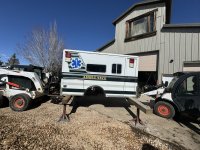
The Truck:
I found very few crew cab f550's initially. The ones I found were either too long, didn't have 4wd, or were just totally clapped out beaten work trucks. After a while I found a truck in Spokane that seemed clean, and the seller was responsive. After some conversations we set up a time and I picked it up. Its exactly what I was looking for, clean, and even had a factory 2nd fuel tank installed. I made the almost 11 hour drive from Spokane back to Utah in almost one fuel stop, very cool.
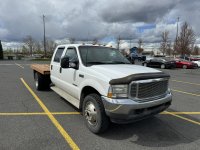
Truck needed new tires and a solid inspection once I got home. I wasn't going to be needing the bed, so that came off. Everything looked as well as could be expected. Shocks probably need to be replaced soon, but you cant even tell there are leaf springs with no weight on it, rides like i'm on rubber bushings still, so suspension will have to wait for now until the weight shows me how it really feels.

Everything looked solid, I did an oil change and topped fluids. Decided to drive it a bit before doing anything more.

The Box:
The box is a late 1980's Horton Type-1 truck box. From what I can tell its a tank. They were engineered to handle a rollover, so I'm going to study the structure and try to stay as close to that design as possible if I make changes. To foreshadow, changes will be made.
I really needed to get a feel for the space inside and how it would be to spend some time in it. For 2024 I decided to get it more or less fitted to the truck, do a small, "good enough" interior build and figure out exactly what I needed and wanted. My priorities were:
Needs:
Shower + Toilet
Seating for 2
Queen Size Bed
50 gallons fresh water
Dry heat of some sort
Wants:
Seating for 4
Sleeping for 4
100+ Gallons Fresh Water
100+ Gallons reserve diesel
Radiant floor heat
Maintain ambulance aesthetic
I gutted the box, and installed some cheap 2" insulation panels which helped a lot keeping the heat out.
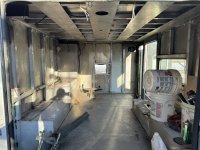
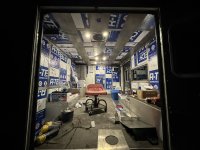
I flipped the box around and figured out a mounting system. Just used some conveyor belt on a 2x4 as a spacer for the frame rails and some modified u-bolts from a flatbed kit, after a few thousand miles and some 200 or so on dirt roads one of the 2x4 eventually split, the final build will include a complete subframe to support the box and overhang in the rear. I removed any mention of Ambulance or Emergency vehicle, and all the red side and forward facing lamp covers. I'll keep the clear scene lights and retrofit LED's for exterior lighting. I'll use the same retrofit on the brake lamps, turn signals, and reverse lights so I can keep the old style Whelen fixtures. I also re-wired the 7-pin plug to a split so I could easily plug in lights from the box and continue having an option to tow. I also needed to re-route and cut out new filler mounts on the box for the front and rear tanks.
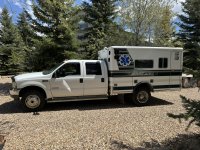
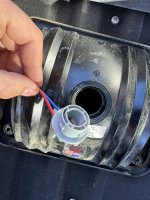
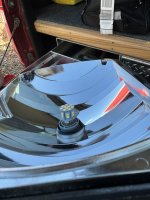
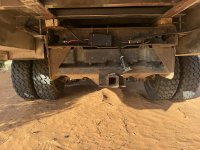
This was January 2024.
$2000 later and we have an aluminum box.

The Truck:
I found very few crew cab f550's initially. The ones I found were either too long, didn't have 4wd, or were just totally clapped out beaten work trucks. After a while I found a truck in Spokane that seemed clean, and the seller was responsive. After some conversations we set up a time and I picked it up. Its exactly what I was looking for, clean, and even had a factory 2nd fuel tank installed. I made the almost 11 hour drive from Spokane back to Utah in almost one fuel stop, very cool.

Truck needed new tires and a solid inspection once I got home. I wasn't going to be needing the bed, so that came off. Everything looked as well as could be expected. Shocks probably need to be replaced soon, but you cant even tell there are leaf springs with no weight on it, rides like i'm on rubber bushings still, so suspension will have to wait for now until the weight shows me how it really feels.

Everything looked solid, I did an oil change and topped fluids. Decided to drive it a bit before doing anything more.

The Box:
The box is a late 1980's Horton Type-1 truck box. From what I can tell its a tank. They were engineered to handle a rollover, so I'm going to study the structure and try to stay as close to that design as possible if I make changes. To foreshadow, changes will be made.
I really needed to get a feel for the space inside and how it would be to spend some time in it. For 2024 I decided to get it more or less fitted to the truck, do a small, "good enough" interior build and figure out exactly what I needed and wanted. My priorities were:
Needs:
Shower + Toilet
Seating for 2
Queen Size Bed
50 gallons fresh water
Dry heat of some sort
Wants:
Seating for 4
Sleeping for 4
100+ Gallons Fresh Water
100+ Gallons reserve diesel
Radiant floor heat
Maintain ambulance aesthetic
I gutted the box, and installed some cheap 2" insulation panels which helped a lot keeping the heat out.


I flipped the box around and figured out a mounting system. Just used some conveyor belt on a 2x4 as a spacer for the frame rails and some modified u-bolts from a flatbed kit, after a few thousand miles and some 200 or so on dirt roads one of the 2x4 eventually split, the final build will include a complete subframe to support the box and overhang in the rear. I removed any mention of Ambulance or Emergency vehicle, and all the red side and forward facing lamp covers. I'll keep the clear scene lights and retrofit LED's for exterior lighting. I'll use the same retrofit on the brake lamps, turn signals, and reverse lights so I can keep the old style Whelen fixtures. I also re-wired the 7-pin plug to a split so I could easily plug in lights from the box and continue having an option to tow. I also needed to re-route and cut out new filler mounts on the box for the front and rear tanks.





